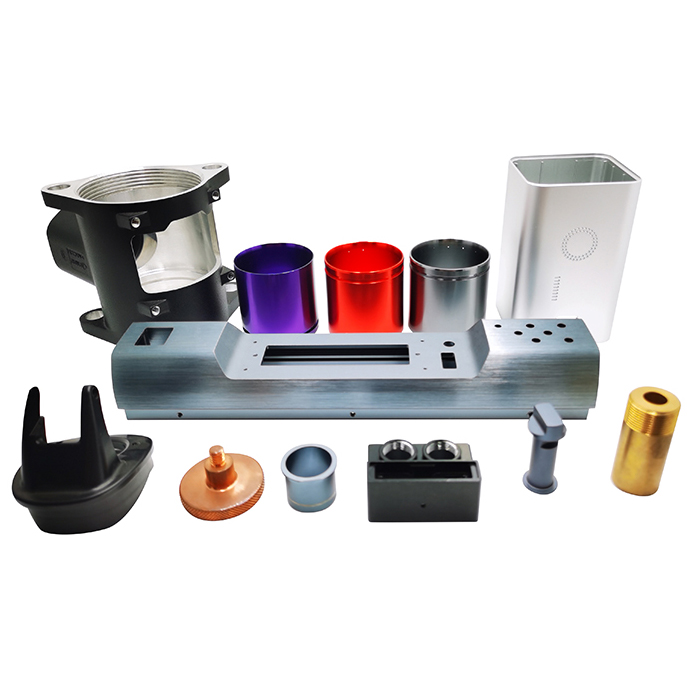
Generally, the forging heating in which the amount of burning loss is 0.5% or less is less oxidative, and the heating in which the amount of burning loss is 0.1% or less is referred to as non-oxidizing heating. Less oxidation-free heating can reduce metal oxidation and decarburization, significantly improve the surface quality and dimensional accuracy of forgings, and reduce mold wear. Less oxidation-free heating technology is an indispensable supporting technology for precision forging. This technology has yet to undergo a lot of research in China.
There are many ways to achieve less oxidation-free heating. The commonly used and fast-developing methods are rapid, medium protection, and less oxidizing flame heating. machining part
1, rapid heating
Rapid heating includes rapid heating and convection rapid heating, induction electric heating, and contact electric heating in a flame furnace. The theoretical basis for rapid heating is that when the metal blank is heated at a technically possible heating rate, the superposition of temperature stress, residual stress, and tissue stress generated inside the billet is insufficient to cause cracking of the billet. This method can be used for small-sized carbon steel ingots and blanks for the general forging of simple shapes. Since the above process has a high heating rate, the heating time is short, and the oxide layer formed on the billet's surface is thin, so the purpose of oxidation is small.
When induction heating is used, steel burning is about 0.5%. A protective gas can be introduced into the induction heating furnace to achieve the requirement of no oxidation heating heating. The shielding gas is an inert gas such as nitrogen, argon, helium, or the like, and a reducing gas such as a mixture of CO and H2, specially prepared by a protective gas generating device. CNC
Since rapid heating significantly shortens the heating time, the degree of decarburization can be significantly reduced while reducing oxidation, which is different from the less oxidizing flame heating, one of the most significant advantages of rapid heating. plastic part
2, liquid medium protection heating
Standard liquid protection media are molten glass, molten salt, etc. The salt bath furnace heating described in the first section of Chapter 2 is a type of fluid medium protection heating.
Figure 2-24 shows a pusher-type semi-continuous glass bath furnace. In the heating section of the stove, a high-temperature molten glass is melted in the bottom of the furnace, and the billet is heated after being continuously pushed through the glass liquid. Due to the protection of the glass liquid, the billet is not oxidized during the heating process, and after the billet is pushed out of the glass liquid, the surface is on the surface. Attached to a thin layer of glass film, it prevents secondary oxidation of the billet and lubricates it during forging. This method is fast and uniform in heating, has good oxidation and decarburization effects, is easy to operate, and is a promising less oxidation-free heating method.
3, solid medium protection heating (coating protection heating)
A special coating is applied to the surface of the blank. When heated, the coating melts to form a dense and airtight coating film. It is firmly bonded to the surface of the blank to isolate the blank from the oxidizing furnace gas to prevent oxidation. After the billet is discharged, the coating can prevent secondary oxidation and has a heat-insulating effect, avoiding the billet's surface temperature drop and acting as a lubricant during forging.
The protective coating is divided into a glass coating, a glass ceramic coating, a glass metal coating, a metal coating, a composite coating, and the like according to its composition. The most widely used is the glass coating.
Glass coatings are suspensions of a particular composition of glass powder plus a small amount of stabilizer, binder, and water. Before use, the surface of the blank should be cleaned by sandblasting, etc., so that the surface of the coating and the blank can be firmly bonded. Coatings are applied by dip coating, brush coating, spray gun spraying, and electrostatic spraying. The coating is required to be uniform. The thickness is appropriate. Generally, it is 0.15 to 0.25 mm. If the coating is too thick, it is easy to peel off and too thin to protect. After coating, it is naturally dried in the air and placed in a low-temperature oven. It is also possible to preheat the billet to about 120 ° C before coating so that the wet powder is dried immediately after application and adheres well to the surface of the blank. The pre-forging heating can be carried out after the coating is dried.
The coating should be adequately melted, dense, and chemically stable to provide reasonable protection and lubrication of the glass protective coating. When the various distribution ratios of the glass are different, the physical and chemical properties are different. Therefore, the use depends on the type of metal material used and the forging temperature level. Choose the right glass ingredients.
The glass coating protection heating method has been widely used in China to produce titanium alloy, stainless steel, and superalloy aviation forgings.
Anebon Metal Products Limited can provide CNC Machining、Die Casting、Sheet Metal Fabrication service, please feel free to contact us.
Tel: +86-769-89802722 E-mail: info@anebon.com URL: www.anebon.com
Post time: Aug-31-2019
